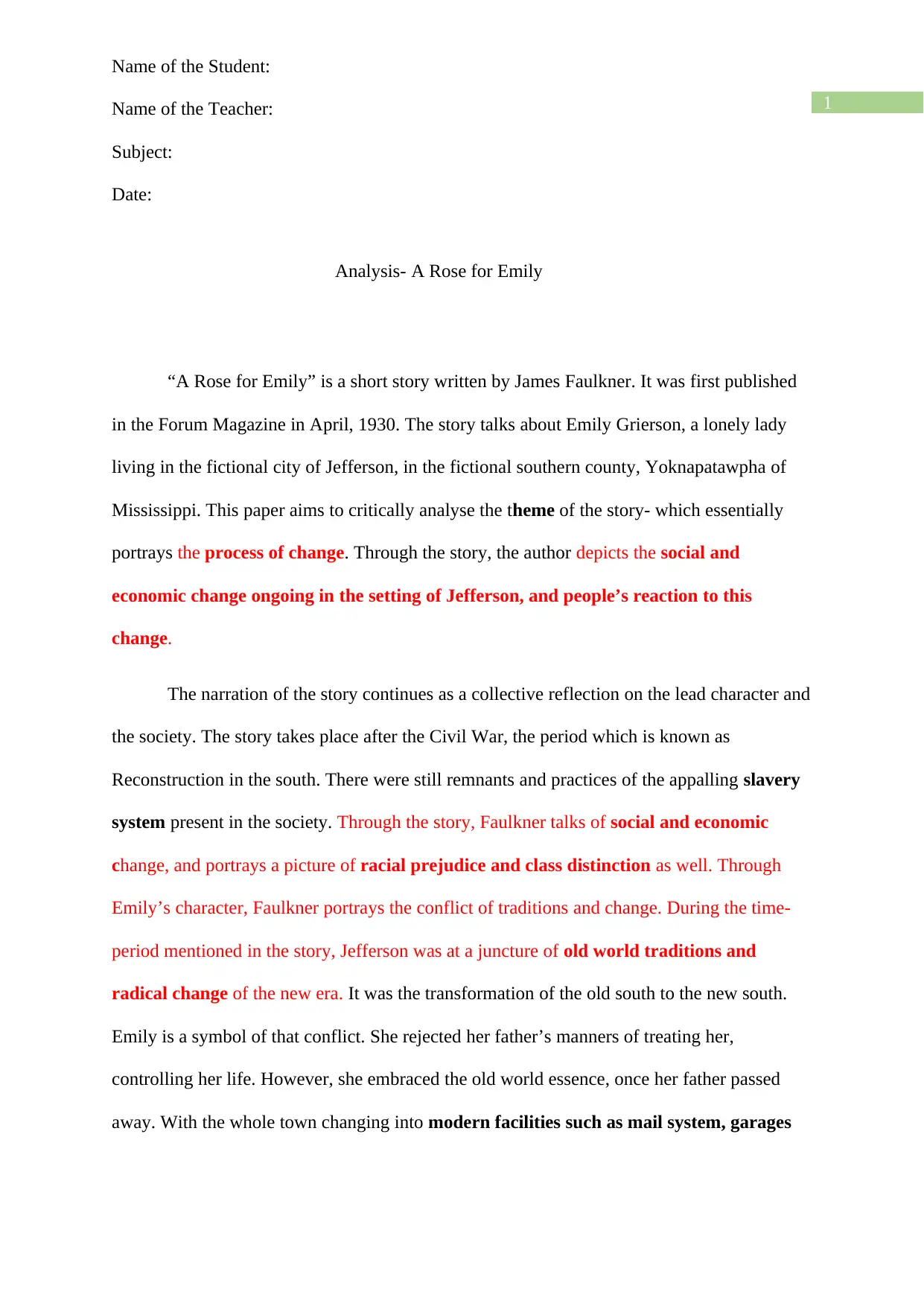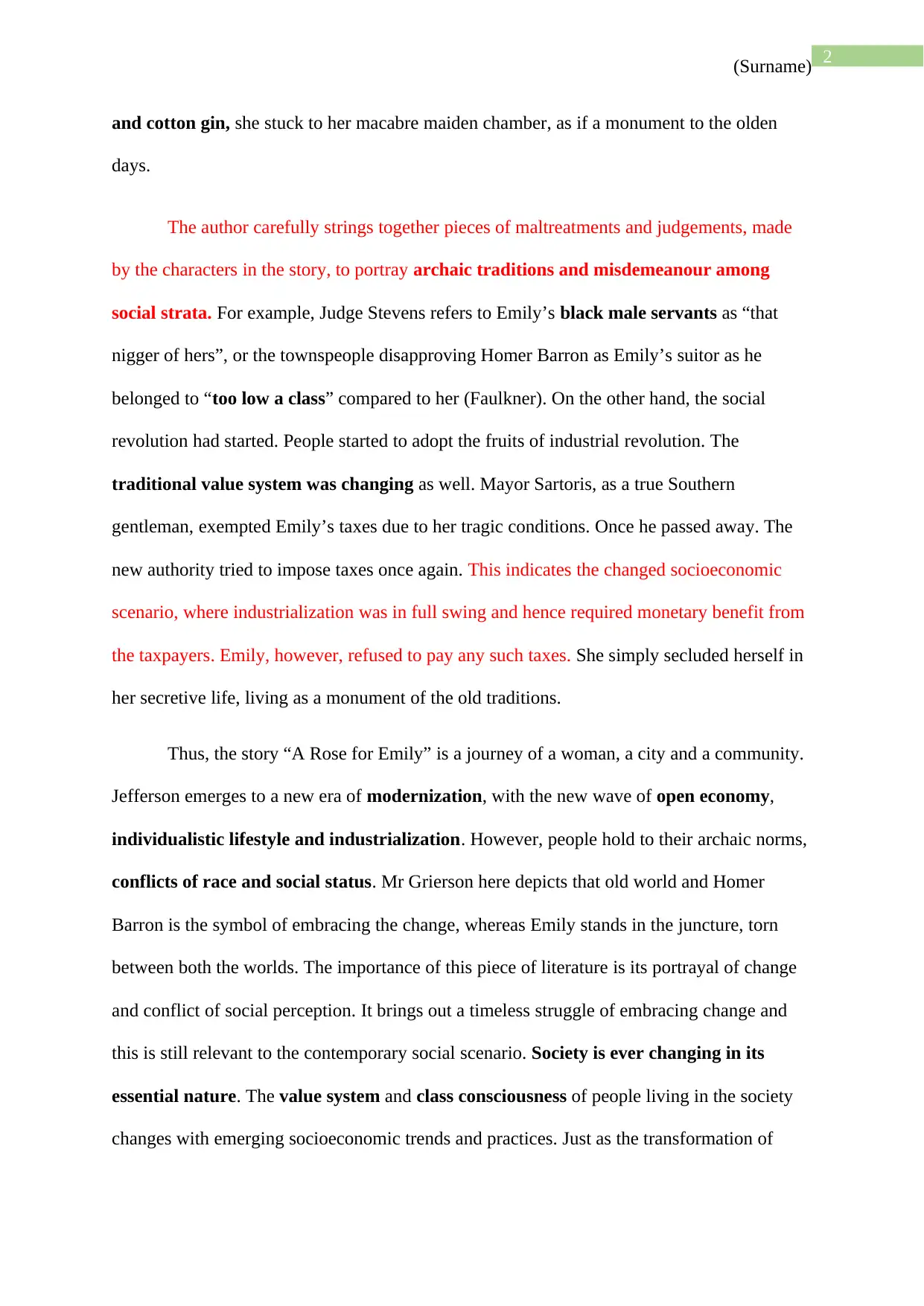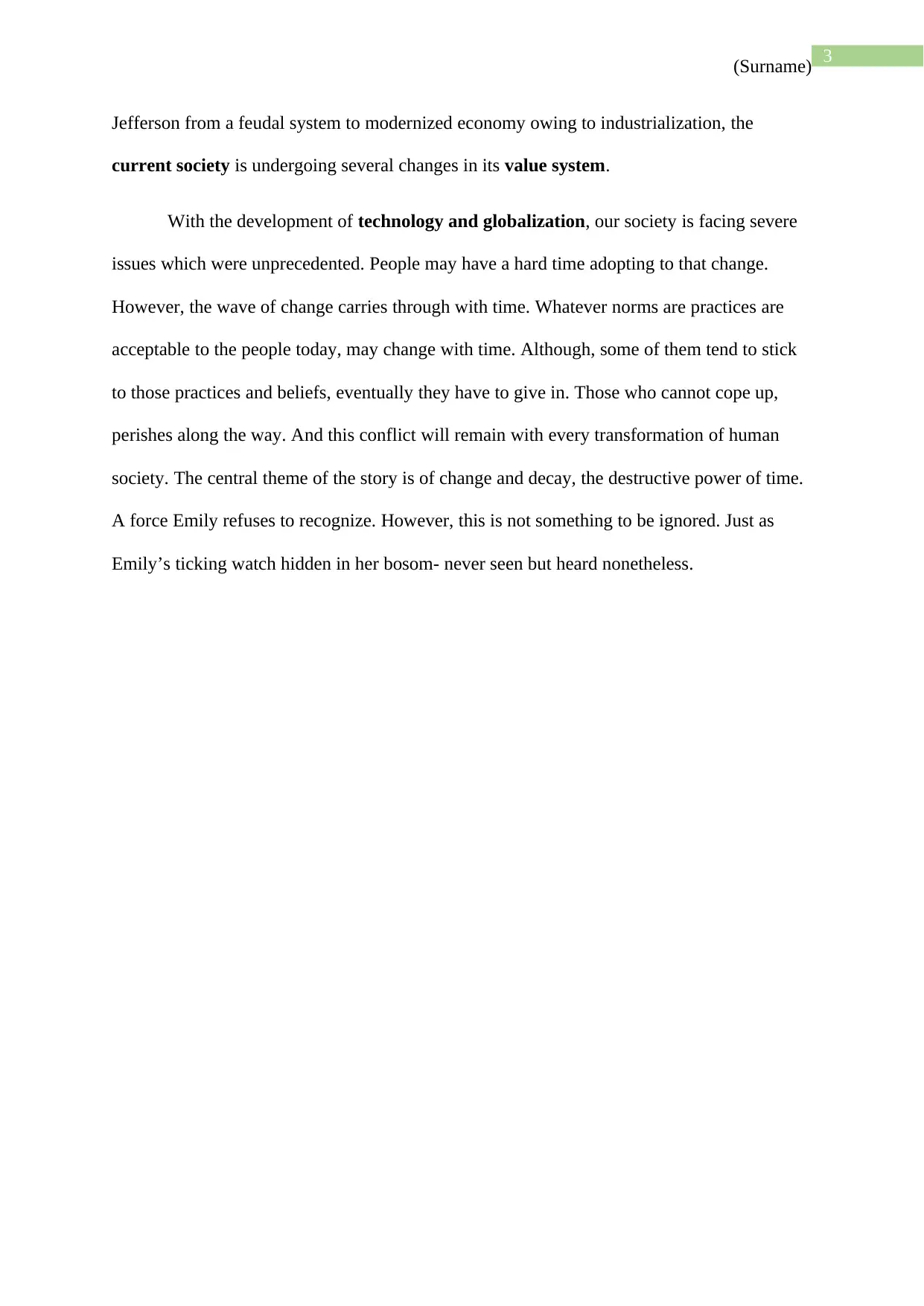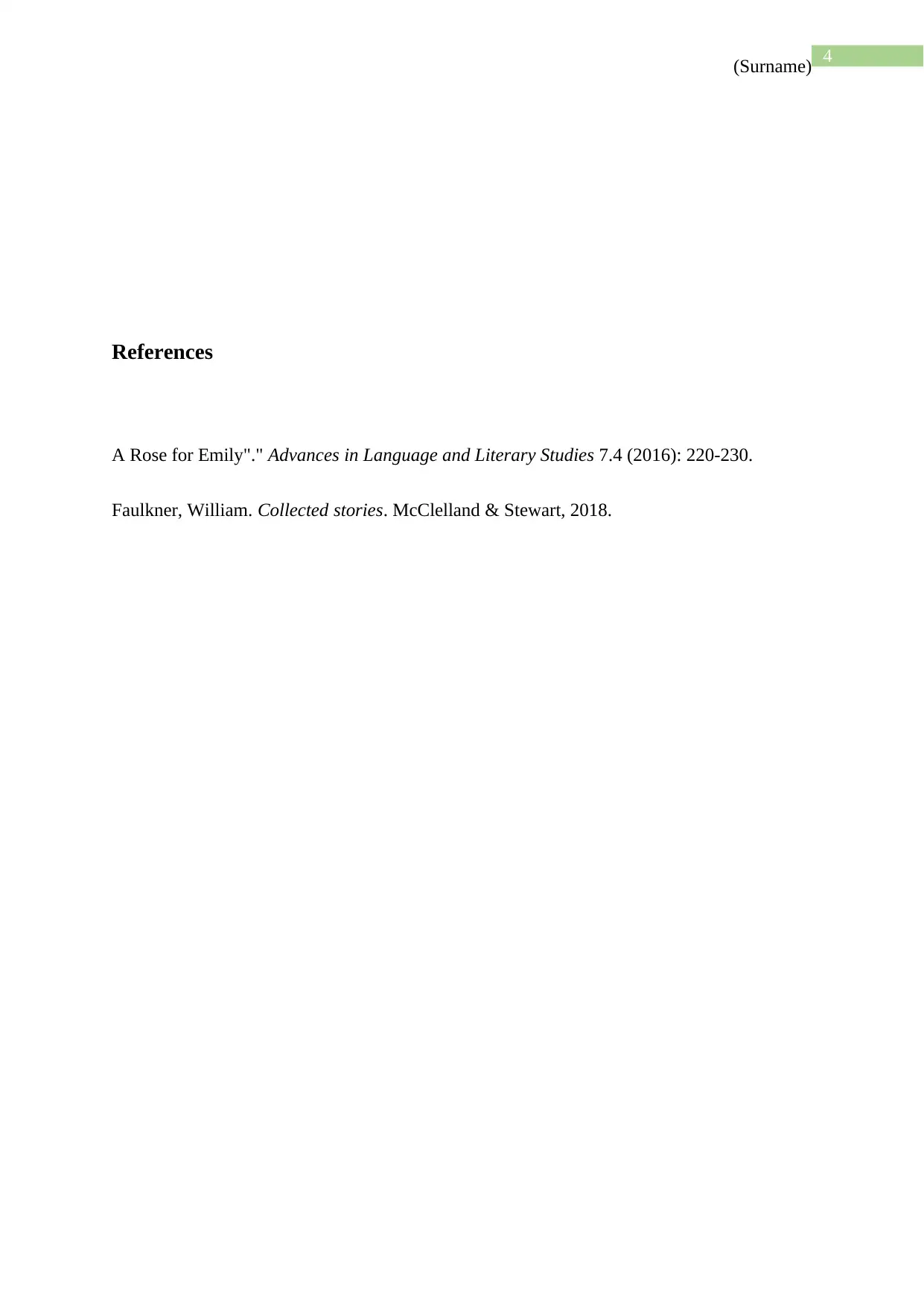ENGL101 Assignment: Analyzing Themes in 'A Rose for Emily' by Faulkner
VerifiedAdded on 2022/11/14
|4
|902
|109
Essay
AI Summary
This essay provides a critical analysis of William Faulkner's short story, 'A Rose for Emily', focusing on the central theme of change and its impact on the protagonist, Emily Grierson, and the fictional town of Jefferson. The analysis examines the social and economic transformations occurring in the post-Civil War South, highlighting the conflict between old traditions and the emerging modern era. The essay explores how Emily embodies this conflict, clinging to the past while the world around her modernizes. The author discusses the portrayal of racial prejudice, class distinctions, and the destructive power of time, as reflected in Emily's actions and the town's reactions. Through textual evidence and examples, the analysis illustrates the timeless struggle of adapting to change and the consequences of resisting it, emphasizing the story's continued relevance to contemporary society. The essay also references the changing value system and class consciousness within society, relating the transformation of Jefferson to the modern world. The references used in the essay are also mentioned in the end.
1 out of 4










![[object Object]](/_next/static/media/star-bottom.7253800d.svg)